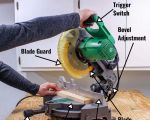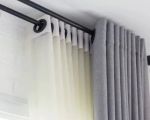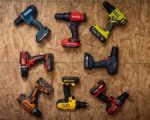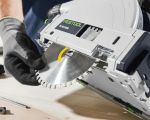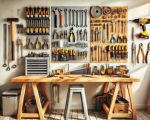- understanding-different-types-of-wood-cutting-blades
- selecting-the-right-blade-for-your-saw-and-project
- top-rated-circular-saw-blades-for-wood-in-2025
- real-user-experiences-and-performance-feedback
- tips-for-maximizing-blade-life-and-performance
1. Understanding Different Types of Wood-Cutting Blades
When it comes to woodworking, the blade you choose makes all the difference. Finding the best circular saw blades for cutting wood means understanding tooth count, material, kerf width, and grind type. Each of these elements affects cut quality, speed, and finish.
A general-purpose blade typically has 24–40 teeth and works well for framing and rough cuts. For fine woodworking or cabinetry, a 60–80 tooth blade provides smoother edges with minimal tear-out. Carbide-tipped blades last longer and stay sharper—especially important for cutting hardwood or composite materials.
Tooth design also plays a key role. Alternate top bevel (ATB) teeth are perfect for crosscuts in wood, while triple-chip grind (TCG) blades excel at cutting through dense or laminated materials without chipping.
2. Selecting the Right Blade for Your Saw and Project
The best blade won’t do much if it’s not compatible with your saw. Always check your saw’s arbor size, RPM rating, and blade diameter. A mismatch can lead to poor performance—or worse, dangerous operation.
If you're building a deck, a rugged 24T framing blade is ideal. For finish carpentry, choose a high-tooth-count blade for precision. For hardwood flooring installations, consider a combination blade that balances smooth cuts and longevity.
Contractor Mike Evans from Richmond, VA, swears by his 60T Freud Diablo blade for cutting oak trim. “I’ve tried cheaper blades that leave burn marks and splinters. You end up wasting wood and time. It’s worth spending a little more up front,” he says.
At ToolNest, you can explore project-specific suggestions and compatibility guides tailored to different saw brands and wood types.
3. Top-Rated Circular Saw Blades for Wood in 2025
With so many choices on the market, we’ve narrowed down a few standout circular saw blades that professionals and DIYers alike trust:
1. Freud Diablo D0740A 7-1/4" 40T – Known for ultra-smooth finish cuts, this blade is a favorite among trim carpenters. Its laser-cut stabilizer vents reduce noise and vibration, which also extends its life span.
2. DEWALT DW3106P5 60T/32T Combo Pack – A cost-effective solution for those who need versatility. The 60T works great for finishing, while the 32T handles framing and general construction needs.
3. Makita A-93681 10" 80T – Ideal for miter saws and table saws, this blade excels in ultra-fine cuts on plywood, hardwood, and softwood. Its micro-grain carbide tips stay sharp longer, making it a long-term investment.
4. Irwin Marathon 24T Framing Blade – Built for durability and speed, this blade handles pressure-treated wood and nail-embedded lumber with ease.
4. Real User Experiences and Performance Feedback
It's one thing to read specs, another to hear from real people using the blades day after day. On woodworking forums and social media, users frequently compare cut quality, burn resistance, and lifespan.
Anna C., a furniture maker in Oregon, recently posted about switching to the Makita 80T: “Before this, I’d spend 20 minutes sanding edges after each cut. Now, I barely need to touch them. Game-changer for production speed.”
On a Reddit thread, several users highlighted that Diablo blades offer the best balance between cost and performance. “I've tried Bosch, Irwin, even some off-brands. For wood, Diablo is the only one that consistently delivers,” wrote user @sawdustjedi.
You can browse additional customer reviews and side-by-side comparisons through resources on ToolNest to get real-world context before buying.
5. Tips for Maximizing Blade Life and Performance
Even the best circular saw blades for cutting wood will degrade quickly if misused. To ensure longevity and safe operation:
- Keep blades clean: Resin build-up can dull blades and increase heat. Use blade cleaners regularly.
- Avoid nails and debris: Always inspect wood before cutting. Hidden nails can destroy carbide tips in seconds.
- Let the saw do the work: Forcing the blade increases heat and dulls edges. Maintain a smooth, steady feed rate.
- Store properly: Hanging blades or keeping them in protective cases prevents accidental warping or tooth damage.
Replacing your blade too soon is costly. Replacing it too late is dangerous. Watch for burn marks, excessive tear-out, or a sluggish cut—these are signs your blade may need sharpening or replacing.
For those just getting into woodworking or upgrading their tools, ToolNest offers curated bundles and educational resources to help you choose the perfect blade for your needs and budget.


